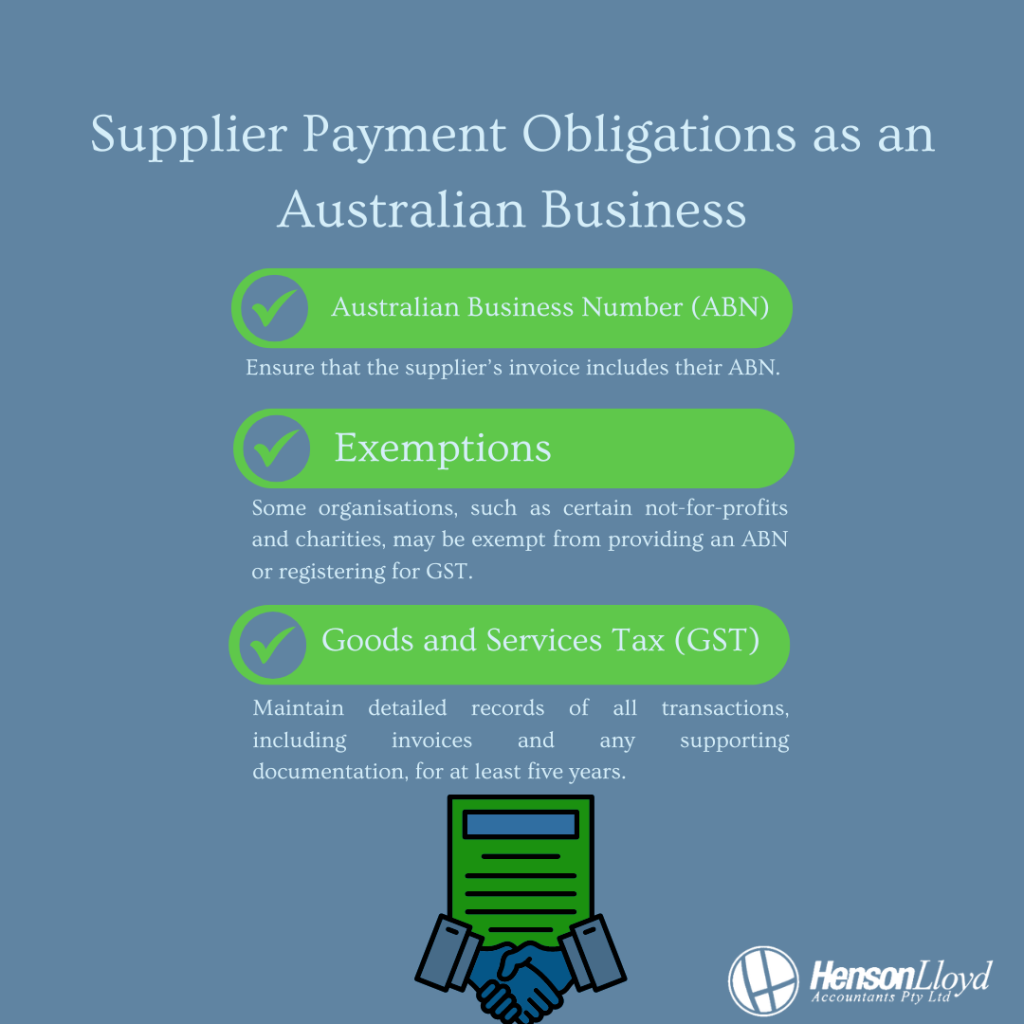Over the past six weeks, we have encountered two separate incidents where clients have received supplier invoices that may not comply with current tax regulations. One example of such an invoice included wording similar to this:
“This organisation is a humanitarian, not-for-profit, tax-exempt, non-government organisation, and as such is not required to quote or hold any government registrations such as an ABN. This organisation is exempt from, and not registered for GST. The recipient purchaser must keep this document with other records relating to the supply for 5 years.”
While these invoices may seem legitimate at first glance, it is crucial to verify the claims made by suppliers to ensure that your payments remain tax-deductible and in compliance with Australian tax regulations.
Key Points to Remember:
- Australian Business Number (ABN):
- Ensure that any supplier invoice includes their ABN. If an ABN is not provided, you are generally required to withhold 47% of the payment and remit it to the Australian Taxation Office (ATO), unless an exemption applies.
- Exemptions:
- Some organisations, including certain not-for-profits and charities, may be exempt from providing an ABN or registering for GST. It is important to verify their exemption status to remain compliant.
- Goods and Services Tax (GST):
- If the supplier is registered for GST, their invoice should include GST details. If not, they should clearly state their exemption from GST.
- Record Keeping:
- Maintain records of all transactions, including invoices and any supporting documentation, for a minimum of five years. This is essential for compliance and in the event of an audit.
Steps to Verify the Legitimacy of an Invoice Without an ABN:
- Request Documentation:
- Ask for supporting documentation from the supplier that proves their claim of exemption, such as a letter from the ATO.
- Have the supplier complete and sign a “Statement by a Supplier” form. Click here for the form.
- Check the ATO Website:
- Use the ABN Lookup tool on the ATO website to verify the supplier’s status as a not-for-profit or charity.
- Consult a Tax Professional:
- If you are uncertain about the legitimacy of an invoice, consult a tax professional or contact the ATO for guidance.
- Keep Detailed Records:
- Ensure that you retain the invoice and supporting documents for at least five years for audit or compliance purposes.
Example Invoice Clauses you may come across: These still require verification to ensure compliance.
- “This organisation is a humanitarian, not-for-profit, tax-exempt, non-government organisation, and as such is not required to quote or hold any government registrations such as an ABN. This organisation is exempt from, and not registered for GST. The recipient purchaser must keep this document with other records relating to the supply for 5 years.”
- “This organisation is a registered charity and is exempt from providing an ABN under section 50-50 of the Income Tax Assessment Act 1997. We are not required to charge GST on our supplies. Please retain this document for your records.”
- “This organisation operates as a public benevolent institution and is exempt from ABN and GST requirements. This exemption is verified by the ATO. Please retain this invoice for your records.”
In such cases, it is important to verify the legitimacy of these claims. If you cannot verify, you are required to withhold 47% of the payment and prepare a Payment Summary for the supplier.
Need Assistance?
If you have any questions or need further clarification, please do not hesitate to contact our office. Our team at Henson Lloyd is here to help you navigate these obligations and ensure your business remains compliant.





